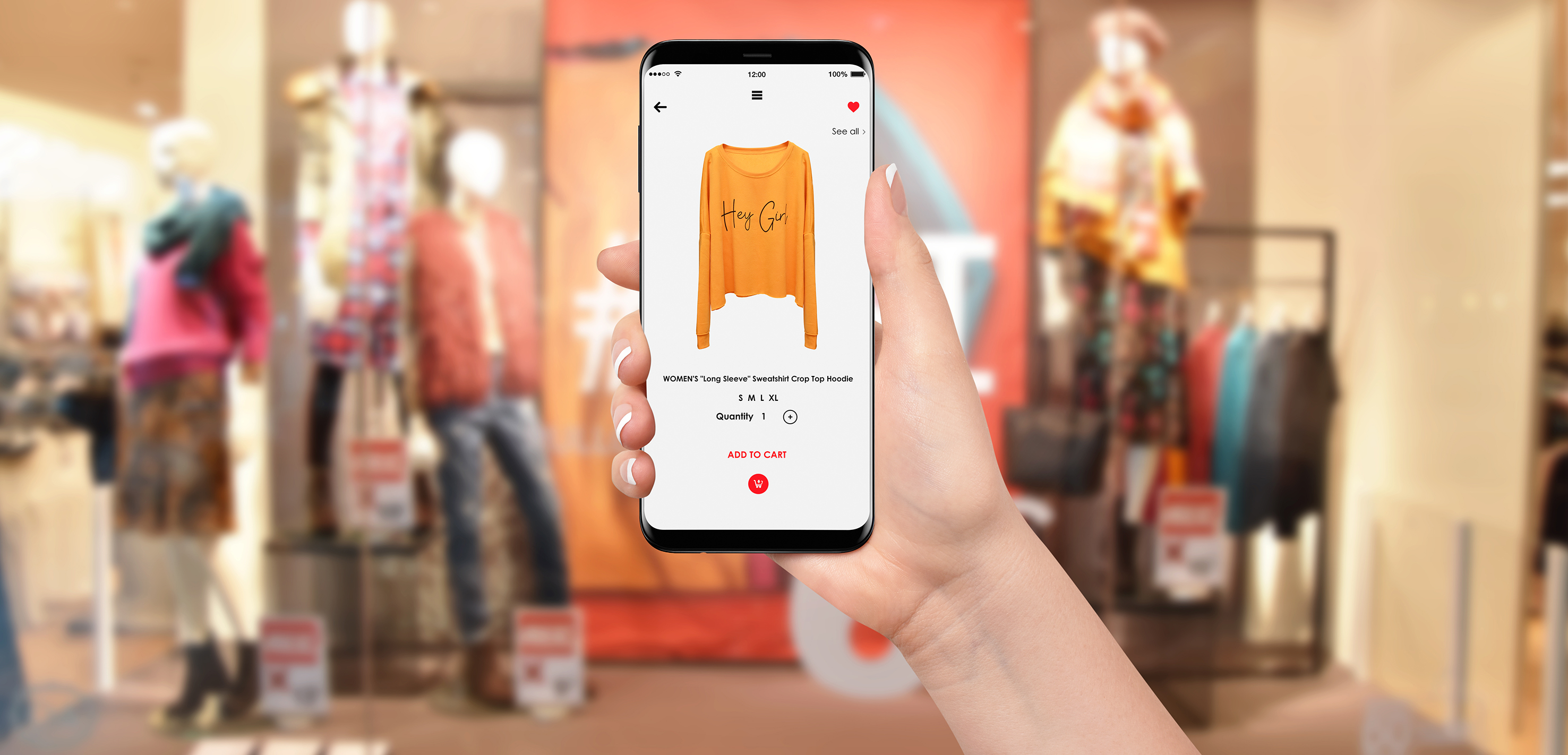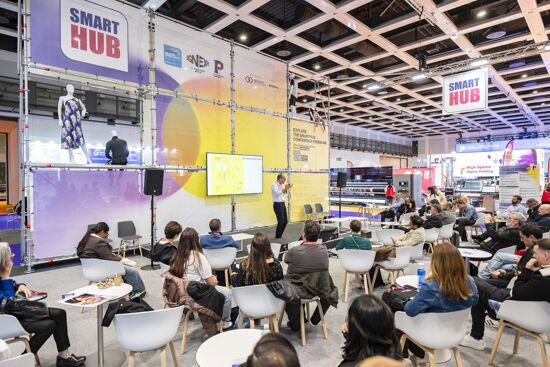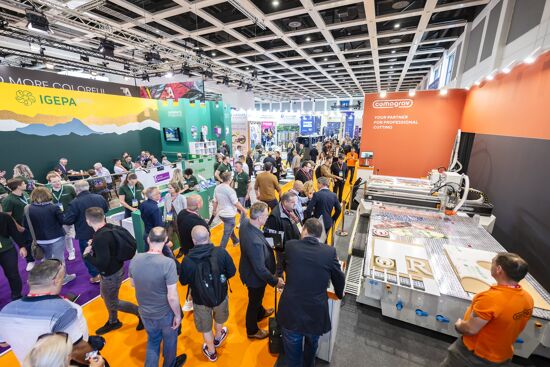How do you leverage software for efficient on demand manufacturing?
.jpg?width=750)
As the demand for customized, personalized products continues to accelerate across all sectors of the apparel marketplace, the requirement for an efficient print workflow places an onerous burden on manual order processing and file preparation within the traditional product workflow.
DTG print has driven the demand for personalized, customized products facilitated by printing onto pre-sewn products (blanks), as a disruptive technology the DTG marketplace is now estimated to be worth $3.4 billion with an CAGR of 9.6% [source: Grand View Research]. A key player demonstrating potential growth and opportunities in this market is Printful - who’s business has grown to an incredible 100 million dollars in just 7 years. New applications continue to develop alongside new technologies which facilitate entrepreneurial growth and new business models for all sectors of the textile industry.
Now challenged with the requirement to reduce inventory and improve its environmental credentials the roll to roll marketplace, in particular the sector serving the apparel industry, now faces an equally disruptive era.
In our recent podcast FESPA textile ambassador Debbie McKeegan talked with Guy Alroy, founder of the tech start-up Early.Vision. Based in Israel, Guy and his team have a lifetimes experience in CAD, ERP, and PLM. These three components in harness form the backbone of the automation of print on demand and the rationalization of the supply chain. If we are to manufacture on-demand sustainably at scale, we must leverage technology to facilitate growth, increase profits and improve our environmental impact. Here’s a summary of the key takeaways from our conversation.
You can also listen to the full podcast here.
Early Vision was founded to boost the adoption of digital printing and enable the efficient use of sustainable digital technologies at scale. In simplistic terms – the cost of customization for one-off products is currently too high, resulting in a high production cost. This has contributed to the slow adoption of digital printing technologies. Previously the cost of custom-built software in support of on-demand production was beyond the reach of many manufacturers, further slowing implementation. The workflow from point of sale through to manufacture is complicated and challenging, to switch to bespoke, custom built software whilst manufacturing at speed can also be a huge operational challenge.
Early adopters leveraging print automation were ecommerce customers, with a defined business model and a clear strategy to manufacture and deliver at speed.
Harnessing data is the key to smooth production inline with your unique product specifications. Segmenting print orders by product type and unique components is essential so that batch production can be generated automatically and efficiently.
Once you start to add personalization you add a whole new layer of data, whereby the design must travel with the order, through production and dispatch to meet the client’s expectations and delivery schedule. This seamless transaction must be automated if it is to be manufactured at scale. The key here is that the numbers of sku’s, whether 100 or 10,000 becomes an auto generated print queue, where all data is extracted, defined and actioned electronically.

Caption: In an online world with no physical stock, or reduced inventory, such technology offers a sustainable on-demand production method, where products are only manufactured when the order is electronically placed.
You can see how this process equates to an efficient workflow in the DTG world printing on blanks, however, printing roll to roll fabrics presents a unique set of challenges to overcome. In a traditional workflow the fabric is printed before it is cut, this generates between 20-40% waste. Not just the textile is wasted - but also ink and or paper dependent on the print process used.
Deploying software allows the manufacturer to customize the print file. Designing a custom print file automates the efficiencies of garment placement.
The print file can be built from hundreds of SKU’s where each product can be unique in size, style, substrate and design. All elements can be generated as a digital file including cutting for inline manufacturing.
The digitization of the manufacturing workflow is essential for print on demand, the solution is best implemented throughout the workflow, front-end and back, from the moment the sale is received directly through production and onto dispatch to the reap full benefits. As a seamless process, when automated by software, print-on-demand delivers efficient sustainable manufacturing.
A good example of the agility of on-demand software is the recent requirement for mask production. Numerous manufacturers now produce personalized masks. To manage each and every order manually across 1,000’s of orders daily is impossible at scale. Auto tagging and barcoding removes human error to ensure that the right product is delivered to the end-user and the software autogenerates the shipping documentation. Every aspect of production is becoming increasingly traceable, further improving customer engagement and enhanced customer service.
The online experience for both users, clients and manufacturers must be as simple as possible. Early Vision software integrates (plugs into) Adobe illustrator, and other third-party apps such as shopify for ecommerce. The customer can design in the brands online environment (white label), add to cart, and the order card is autogenerated and passed onto the printer or manufacturers workflow in one seamless transaction.

Caption: 3D visualization is an important aspect of product validation, as ecommerce continues to expand across all sectors of apparel, the customer demands an accurate visualization of the product when personalized online.
Waste is also reduced; errors can be rectified in real-time and corrected before the product is purchased or manufactured. Scale, pattern matching, and style can all be corrected using online customization software.

Caption: Calculating waste and lost opportunity in the manual workflow is often overlooked. Using automated nesting can save 40% of printed fabrics, printing only the garment shape further reduces ink usage.
The total cost of ownership is important when looking at any new investment. Automating the production cycle, reducing the waste and inefficiencies of manual process, speeding up production and increasing sales with faster delivery times are all profitable investments – TCO must be considered when evaluating purchase activated manufacturing.
Topics
Interested in joining our community?
Enquire today about joining your local FESPA Association or FESPA Direct
Recent news

Industry Experts Explore the Evolution of Smart Manufacturing in the Textile Industry
A FESPA SmartHUB roundtable at Personalisation Experience 2025 discussed smart manufacturing's transformative impact on the textile industry. Experts highlighted the shift to on-demand customisation, driven by digital printing, data analytics, and automation. Key takeaways included enhanced machine control, significant waste reduction through intelligent software and colour management, and improved sustainability via energy efficiency and near-shoring, ensuring agility and environmental responsibility in textile production.

FESPA 2025 gathers leading visionaries from across the speciality print industry in Berlin
FESPA Global Print Expo 2025, European Sign Expo and Personalisation Experience (6 – 9 May 2025, Messe Berlin, Germany) welcomed Visionaries from across the speciality print industry to shape the future of print, develop forward-thinking business strategies, and explore innovative ways to translate emerging industry trends into tangible growth opportunities.

Exploring Cutting-Edge Textile Printing Innovation with Adobe Print Engine 7
Adobe PDF Print Engine 7, launched at FESPA Global Print 2025, significantly advances textile printing. Debbie McKeegan shares how it automates non-white substrate management and RGB colour handling, expands colour gamuts with in-RIP multicolour transparency blending, and streamlines workflows for efficiency and sustainability. This update boosts customisation, reduces waste, and positions businesses at the forefront of digital print innovation.

FESPA Global Print Expo 2025 - Overall Highlights
FESPA Global Print Expo, Europe's leading print and signage exhibition returned to Messe Berlin from 6 - 9 May 2025.